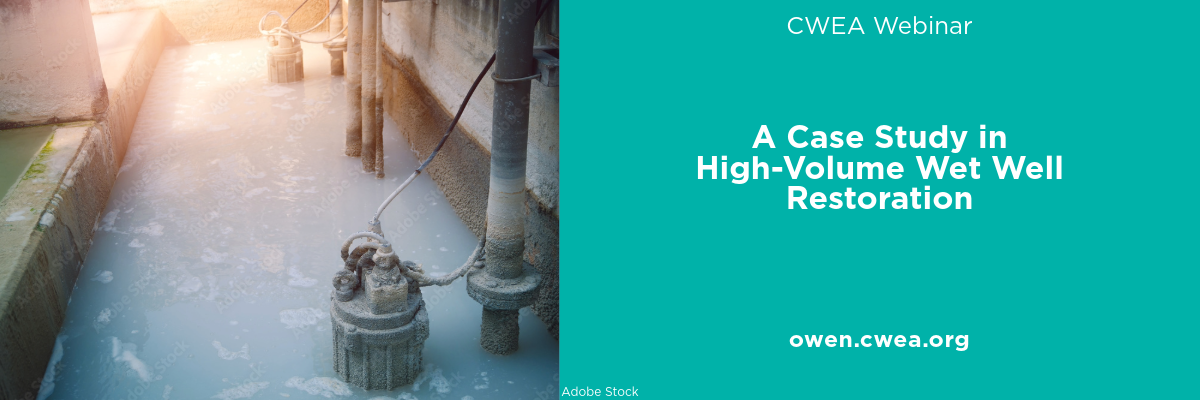|
A Case Study in High-Volume Wet Well Restoration - Live Webinar
May 28, 2024
Contact Hours:
1.2
Description:
 CWEA Members: $25.00
Non-Members: $35.00
1.2 Contact Hours Towards CWEA Certifications: CSM, ECI, MT, EIT
Wastewater collection systems in the USA boast approximately two million pump stations, serving as vital components of sewer agencies. However, these stations come with challenges. Balancing wastewater pumping costs with the prevention of septic conditions within wet wells is critical. Imbalance leads to excessive energy consumption or accelerated corrosion and infrastructure deterioration. Wet wells, primarily constructed from reinforced concrete, are particularly susceptible to corrosion from hydrogen sulfide produced by microbiological activity.
In Bullhead City, AZ, a lift station wet well of nearly 13,500 cubic feet faced corrosion issues due to sulfide attack. The city required a rehabilitation solution that would endure the structure's lifetime, restore lost structural integrity, and shield against corrosion. Thankfully, an innovative technology emerged—a revolutionary approach within the sanitary sewer industry. Structural panels pieced together to form a cohesive inner shell, made from inert materials were anchored, grouted, and sealed with epoxy resin. These panels, along with the grout, not only restored lost structural capacity but also provided comprehensive lining to shield the interior from the corrosive environment.
This highly customizable solution caters to nearly all large sanitary sewer structures in need of corrosion-resistant lining. Unlike some spray-applied liners, this method firmly anchors the solution to the walls, ensuring a one-and-done rehabilitation process that stands the test of time.
• Learning Objectives/Attendee Takeaways:
No. 1: Critical Challenges: Wastewater pump stations in the USA face the challenge of balancing pumping costs with preventing septic conditions in wet wells, which can lead to energy wastage and infrastructure corrosion, especially in wet wells made of reinforced concrete.
No. 2: Case Study: Bullhead City, AZ: Bullhead City addressed corrosion in 13,500 cubic feet lift station wet well caused by sulfide attack. They implemented an innovative solution involving structural panels forming an inert inner shell, anchored, grouted, and sealed with epoxy resin.
No. 3: Revolutionary Rehabilitation: This approach not only restored structural integrity but also provided comprehensive lining to shield against corrosion. It represents a significant advancement in combating corrosion challenges in wastewater infrastructure, ensuring long-term performance.
|
Sessions information is not available at this time.
|
|
|
Speaker information is not available at this time.
|
|
|
|